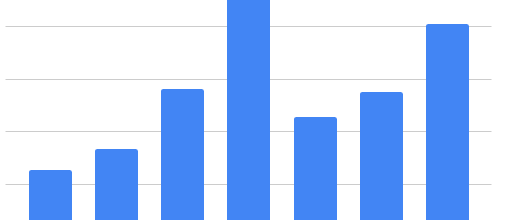2018 Holiday Season Cyber-Shopping Trends
You know the story: Christmas shopping used to follow a familiar pattern of door-busting sales on Black Friday followed by January markdowns. And then Cyber Monday came along, and workers used employers’ computers to scoop up additional deals on the first day back to work after Thanksgiving.
Now we’ve got a week-long event called Cyber Week spanning the Thanksgiving holidays. And for some goods, such as consumer electronics, it’s pretty much half the month of November.
Best Buy marked down HDR TVs a week before Thanksgiving and hasn’t raised prices yet: the best TV on the market, LG’s OLED55B8, is still selling for $400 off of list price.
Salesforce Monitors the Trends
The Salesforce Reports show some new trends emerged this year: Cyber Monday discounts were the highest for any shopping day ever, at 31%. Cyber Monday also had the highest rate of free shipping deals ever at 84%. So Cyber Monday is the value shopper’s favorite day.
70% of product searches started on mobile for the whole week, and more online purchases were concluded on mobile than any other platform.
This was as strong year for holiday shopping, but the growth was all online as in-store purchases were flat from last year.
Marketers sent more emails than ever before, 4.1 billion. Text messages went totally nuts, increasing 70% from last year, but still nowhere close to email at a mere 93 million.
Biggest Days
The biggest days were Black Friday and Cyber Monday, but Thanksgiving itself was third. This is impressive given that stores were closed.
Thanksgiving Day shopping was mainly from mobile devices, starting around 4:00 PM. What better way to entertain yourself during a boring football game than spending money?
Amazon’s Turkey Five
Cyber Monday was Amazon’s biggest shopping day ever, the culmination of the period it calls the Turkey Five rather than Cyber Week. Of course, it doesn’t have the brick and mortar stores than still make up a significant amount of sales for traditional retailers on Black Friday.
Most of Amazon’s promotions were its own products: Echo, Fire TVs, Kindles, and Fire HD tablets. Ho hum stuff. Only one Instant Pot was heavily discounted, the six quart 7-in-1 model that most users already have.
Both Amazon and Best Buy offered some $130 TV sets that aren’t bad for people who have bathrooms without sets. They also offered some nearly state-of-the-art HDR models for less than $300, not bad deals for the spare room or the office.
Enduring Trends
Most likely, the trends toward longer discount periods, more marketing via digital messages, and more mobile shopping will continue. These trends started a few years ago and become more pronounced each year.
Marketers have more insight than ever about consumer preferences, so shopping is becoming more personalized. There’s no data on this guess, but I wouldn’t be surprised if personalized enticements appear in a significant way next year.
Current practice is to price uniformly and steer consumers toward deals matching their interests. But it’s not a big step offer bespoke deals for online purchases. This will trim margins, but it could also stimulate more shopping.
The Role of Social Media
The question about that will be consumer acceptance of retailer crunching their preferences. We already have technology to do this, but it probably still feels creepy to most of us.
Personalized ads on social media are making shopping more individualized anyway. Social traffic and text messaging on Thanksgiving Day are way up, meaningful because there’s no in-store competition.
The most talked about brands, products, and outlets on social media are still tech-oriented, but most shopping is non-tech. So there’s a lot of room for growth for retail, at least as long as the economy continues to hum outside the steel-price-sensitive auto sector.





